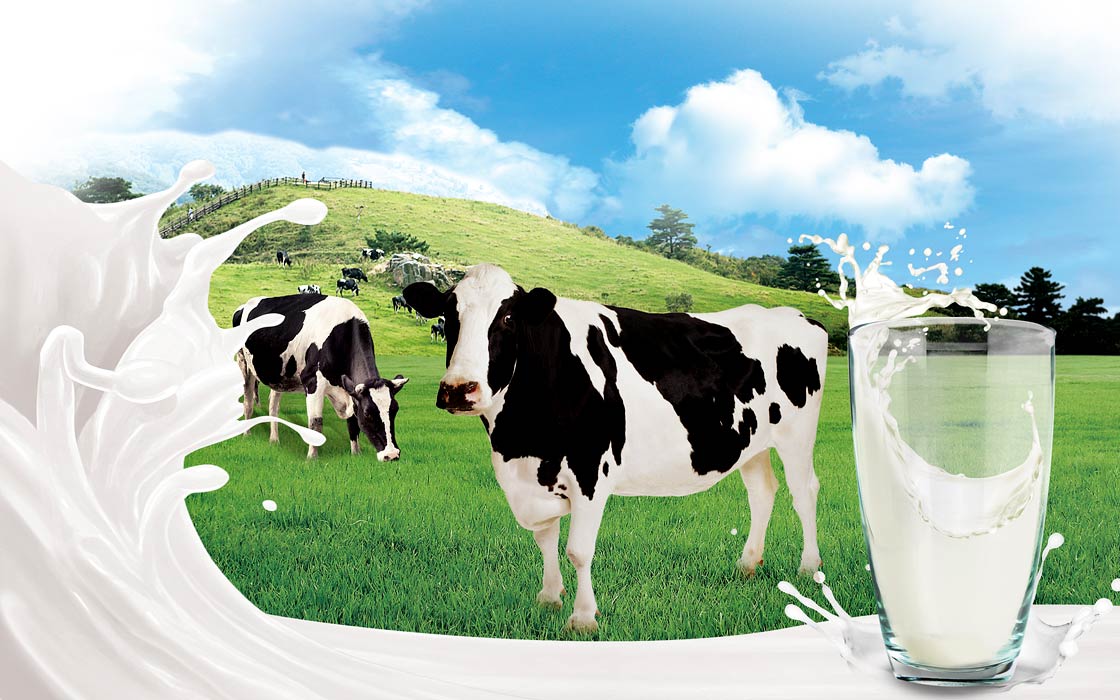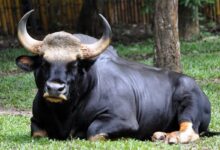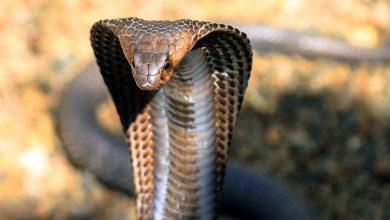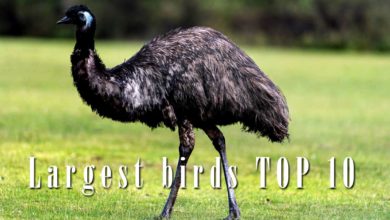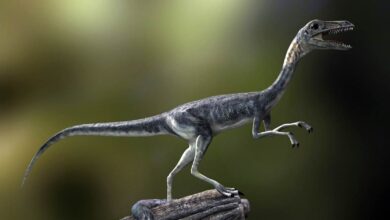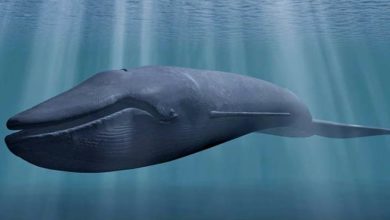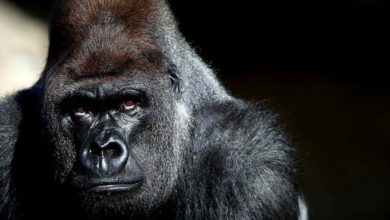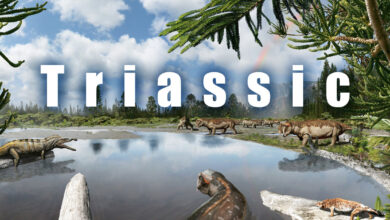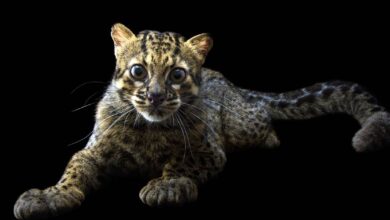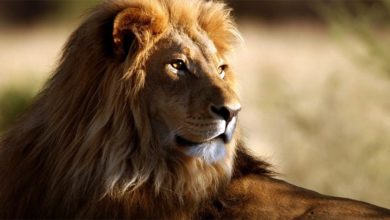Where does the milk come from?
Milk is one of the most widely consumed drinks by humans. It serves as an addition to breakfast cereals, it is an ingredient in drinks, e.g. cocoa, or an addition to coffee, and others drink it because they like it or think they must. However, our huge appetite for milk comes at a price that is paid by the animals that provide us with this product.
Man is the only mammal for which milk is an integral part of the diet in adulthood. In all other mammals, the mother’s food serves only to feed and raise the offspring – adult animals do not eat it. The only exception is cats, but it must be remembered that only animals kept at home or fed by humans drink milk – if it were not for us, they would not do eat it. However, people consume large amounts of milk. It seems that lactating animals do not suffer any harm, since they are not killed. Let us see how it is in essence.
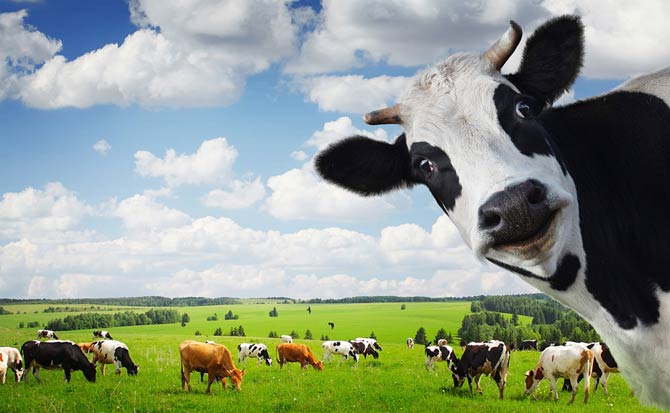
Natural domestic cattle
In nature, cows, i.e. female domestic cattle (Bos bonasus), reach sexual maturity at the age of about 6 months. After a pregnancy of 280 days, a cow usually gives birth to one calf. During the first few days, the milk produced by the cow, then called colostrum, has a slightly different composition – it contains more nutrients and antibodies that provide immunity. The calf is fed with milk for more than 8 months and then gradually switches to solid food.
Milk is produced by female mammals as food for newborns – as you can see, it is no different for cows that start producing food just before the calf is born and produce milk for several months afterward. This means that one animal only supplies milk for a limited time. This is contrary to the desire to get as much of it as possible from one animal. What does this lead to in practice?

The life cycle of a dairy cow
To maximize profits and minimize inputs, the dairy industry has put in place certain processes to increase milk production, which, however, run counter to the natural life cycle of domestic cattle.
A sexually mature dairy cow is inseminated artificially at the age of 1.5–2 years. The newborn calf is taken 1–3 days after giving birth – so that the bond between the mother and the child does not develop. Taking the calves at a later time would make the cow suffer much more. However, such action is only apparently caused by caring for animals – above all, it is of practical importance. When a calf is taken away from a cow, the cow’s milk yield is temporarily reduced due to stress, and the later this happens, the more it lengthens. Thus, when the calf is taken almost immediately after birth, the milk-giving efficiency is at the highest possible level.
To avoid a decrease in milk production, the cow is fertilized again 90 days after giving birth. Before the birth itself, it is not milked for some time to gain strength, and immediately afterward the colostrum is extracted, which the calves are fed. The described cycle is repeated an average of 4–5 times – this is the number of times that can lead to artificial insemination and childbirth. After that, the cow’s body becomes too exhausted, which results in less milk production and a decrease in immunity to udder diseases.
Purely dairy cows are not suitable for further breeding for meat, for humans, therefore the cow is then sent to the slaughterhouse. The meat of dairy cows is intended for the production of food for cats and dogs, and for the production of meat meal, which is fed to farm animals. The cow is therefore only 7 years old at the time of death, although it could naturally live about 20 years.

The dark side of the dairy industry
The entire life of the dairy cows is therefore devoted to the production of large amounts of milk – this is where most of the animal’s energy is spent. To improve performance, the most productive farms build closed barns where the cows hardly ever move.
Their practically only job is eating, and since they hardly consume any energy, they produce much more milk. However, there is no need for the body to develop muscles, so dairy cows can be recognized by the fact that they are lean and weakly muscled, but have very large udders.
There are still traditional farms, where cows go out to pastures and are only driven to the cowshed for milking. Such cows are less distinguishable in appearance, they are better built, but at the same time, they give less milk. Therefore, they gradually disappear from the landscape of many countries.
Below is a video showing dairy cows during their first and last walk to the slaughter. Since they have been locked up all their lives, they have difficulty moving.
Dairy cow calves
What about the calves? In the case of bulls, after a few weeks of life, they are usually used for veal, because breeding them for meat is not profitable – they are too lean. Few are intended for breeding as breeding bulls. However, often little bulls are born – nowadays it is possible to get sexed semen, i.e. containing selected female sperm, which means that in most cases a heifer will be born, giving the prospect of further use and profit for the owner.

Is milk necessary for humans?
At this point, it should be noted that the high demand for milk is related, among others, to certain nutritional trends, but also to misconceptions. For example, only milk is believed to be a suitable source of calcium. Yes, it is easily digestible, but plants such as almonds, poppy seeds, soybeans and broccoli are also rich sources of this element. In addition, adults do not need as much calcium as children because their skeletal system is no longer developing. There is also the issue of lactose intolerance (milk sugar) – in stores, you can more and more often find products with reduced lactose content.
It is hard to expect that everyone will suddenly give up drinking milk or eating cheese. However, it is worth considering whether it is a really necessary component of our diet, or just a good that can be replaced with other products, much more valuable for an adult. At the same time, it is worth being aware of where the milk comes from and under what conditions it is made.
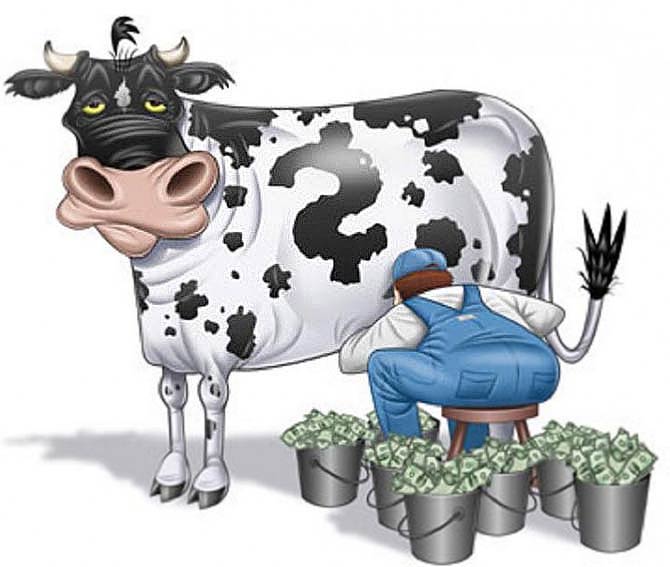
Milk – interesting facts
- 7% (16.4 million) of American adults believe that chocolate milk comes from brown cows. The study was conducted in 2017 by the US Dairy Innovation Center. In the same study, 48% of people said they did not know where chocolate milk came from. In another study, it found that almost 20% of Americans do not know that burgers are made from beef.
- We are conditioned to think that if you need food, you go to the store. No one in education teaches children where food or milk comes from.

Recommended
- Dairy cow
- Fastest animals – Top 100
- Fastest animals – on land, in water and in the air
- Fastest mammals
- Fastest birds
- Cheetah
- Most venomous snakes – Top 10
- Largest eagles – Top 10
- Largest birds of prey
- Smartest dogs – Top 10
- Animals records
- Largest crocodiles
- Longest whales
- Heaviest whales
- Longest snakes
- Most venomous snakes
- Largest sharks
- Top-flying birds

